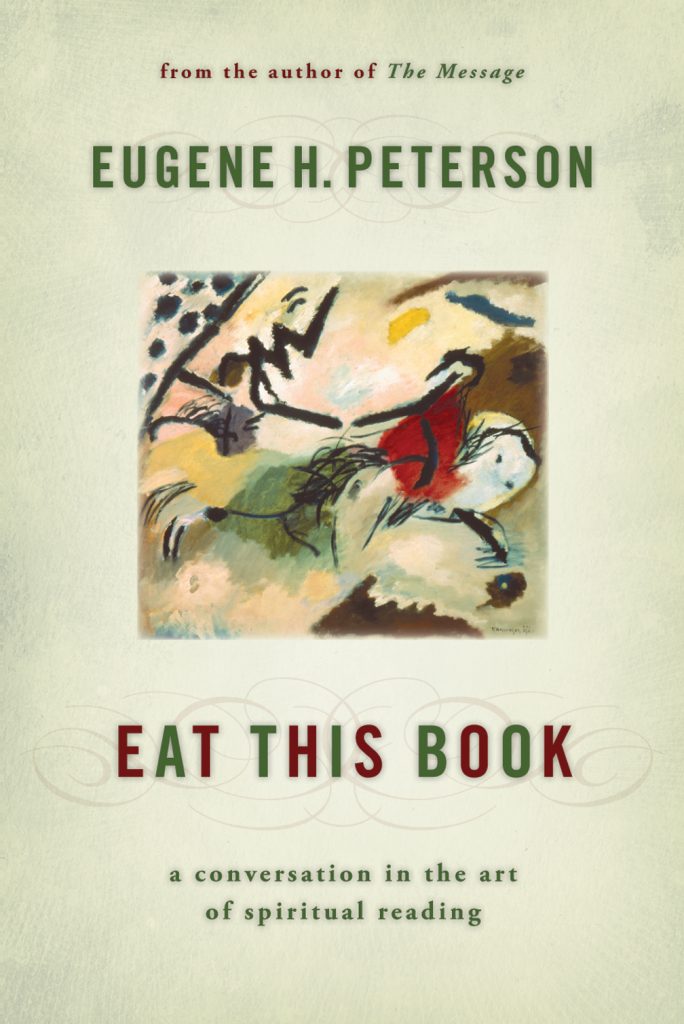“What an astonishing thing a book is,” writes Carl Sagan, who captures my love and appreciation for books quite well. “It’s a flat object made from a tree with flexible parts on which are imprinted lots of funny dark squiggles. But one glance at it and you’re inside the mind of another person, maybe somebody dead for thousands of years. Across the millennia, an author is speaking clearly and silently inside your head, directly to you. Writing is perhaps the greatest of human inventions, binding together people who never knew each other, citizens of distant epochs. Books break the shackles of time. A book is proof that humans are capable of working magic.”
Here are two of the magic-working, shackle-breaking, people-binding books that I’ve been reading lately:
Eugene Peterson’s Eat This Book: A Conversation in the Art of Spiritual Reading

I recently read this as part of the Mosaic Institute class I’m teaching called “Formed By Scripture.” In this rich and beautifully written book, Peterson argues that the way we read the Bible is as important as that we read it. Do we read the Bible for information about God and salvation, for principles and “truths” that we can use to live better? Or do we read it in order to listen to God and respond in prayer and obedience?
In typical Peterson-style, Eat This Book is written with warmth and wisdom, offering readers greatly needed, down-to-earth counsel on reading the Scriptures on their own terms, as God’s revelation. He discusses the nature of language, the practice of lectio divina, the role of translations, and how to engage in the formative, life-changing art of spiritual reading.
This book is the fruit of decades of reading, pondering, conversing about, praying over, and living the biblical story. If you are going to read a book about how to read “The Book,” it’s hard to do better than this one.
David Brooks’s The Second Mountain: The Quest for a Moral Life

Every so often you meet people who radiate joy, who seem to know why they were put on this earth, who glow with a kind of inner light. Life, for these people, has often followed what we might think of as a two-mountain shape.
They get out of school, start a career, and begin climbing the mountain they thought they were meant to climb. Their goals on this first mountain are the ones our culture endorses: to be a success, to make your mark, to experience personal happiness. But when they get to the top of that mountain, something happens. They look around and find the view…unsatisfying. They realize, “This wasn’t my mountain after all.” There’s a different, better mountain out there for them to pursue. And so, they embark on a new journey.
On the second mountain, life moves from self-centered to other-centered. They want the things that are truly worth wanting, not the things other people tell them to want. They embrace a life of interdependence, not independence. They surrender to a life of commitment, this time to the things with lasting value.
In The Second Mountain, Brooks explores the four commitments that define a life of meaning and purpose: (1) to a spouse and family, (2) to a vocation, (3) to a faith, and (4) to a community. He argues that our personal fulfillment depends on how well we choose and execute these commitments.
I resonated with the book’s central premise and found its discussion on the four commitments that make a meaningful life to be thought-provoking and reflection-generating. This is a book worth pondering.
The opinions expressed in articles posted on Mosaic’s website are those of the author and may not reflect the official policy of Mosaic Conference. Mosaic is a large conference, crossing ethnicities, geographies, generations, theologies, and politics. Each person can only speak for themselves; no one can represent “the conference.” May God give us the grace to hear what the Spirit is speaking to us through people with whom we disagree and the humility and courage to love one another even when those disagreements can’t be bridged.
